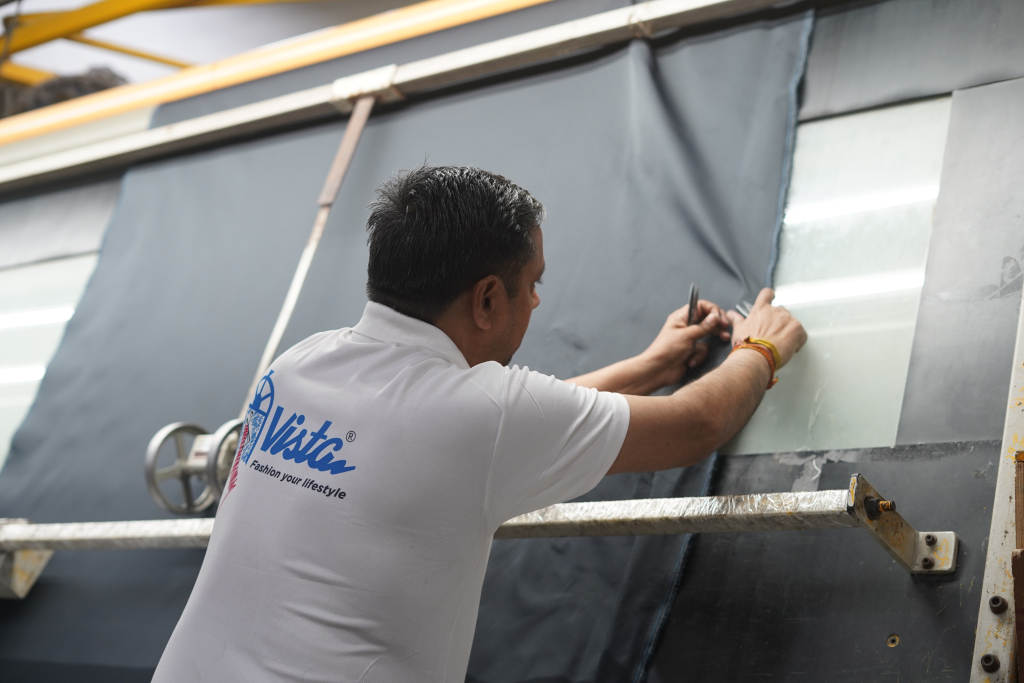Introduction:
Vista Furnishing is a pioneer in manufacturing raw and final textiles with over 30 years of experience. Furnishing products like beddings, sofa covers, fabrics and many more are our forte. In this blog post, we will understand the step-by-step cloth manufacturing process involved in transforming raw materials into the finished fabrics we manufacture.
Step 1 – Yarn Processing
Yarn is the foundation of any fabric. In this stage, raw fibers, such as cotton, wool, or synthetic materials, undergo carding, spinning, and twisting to form yarn. Yarn processing ensures uniformity and strength, setting the groundwork for the subsequent steps in cloth manufacturing.
Step 2 – Weaving Techniques
The art of weaving involves intertwining two sets of yarn—the warp and the weft—to create the fabric structure. Traditional methods, like hand weaving, and modern techniques, such as power looms, contribute to the unique textures and patterns of different fabrics.
Step 3 – Dyeing & Coloring Fabric
After weaving, the fabric is typically uncolored or in its natural state. Dyeing and coloring bring the material to life. This step involves immersing the fabric in dye baths or using digital printing methods to achieve vibrant and diverse color variations.
Step 4 – Drying Process
Following the dyeing process, the fabric undergoes a crucial drying phase. Proper drying ensures the color adheres to the fibers, prevents bleeding, and prepares the material for the subsequent stages of production.
Step 5 – Pattern Embroidery + Digital Print
The aesthetic appeal of fabrics often involves intricate patterns. Explore the world of pattern creation through traditional embroidery and modern digital printing techniques. Learn how these methods contribute to the overall design and visual appeal of the final product.
Step 6 – Quality Check in the Textile Industry
Quality assurance is paramount in cloth manufacturing. This step involves a meticulous examination of the fabric for defects, inconsistencies, and adherence to quality standards. Discover the rigorous testing processes undertaken to ensure that each piece of fabric meets the highest industry standards before reaching the market.
Step 7 – Folding & Packing Process
In the final stages of cloth manufacturing, the finished products undergo careful folding and packing. This step is crucial for preserving the integrity of the fabric and preparing it for distribution and sale. Learn about the packaging methods employed to ensure the fabric reaches consumers in pristine condition.


